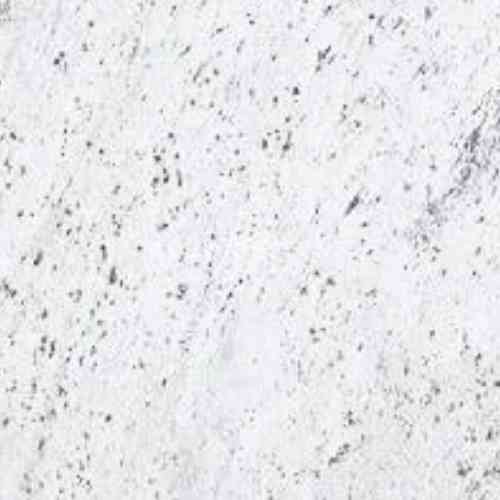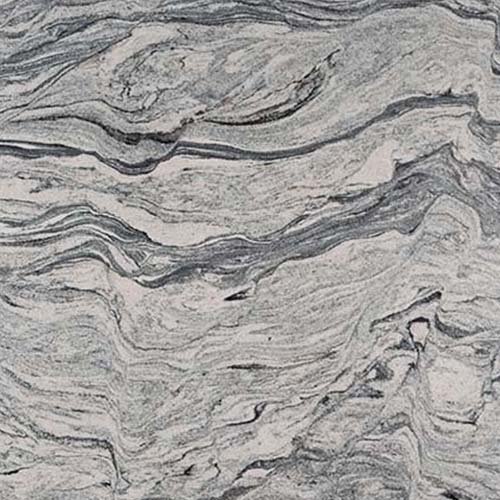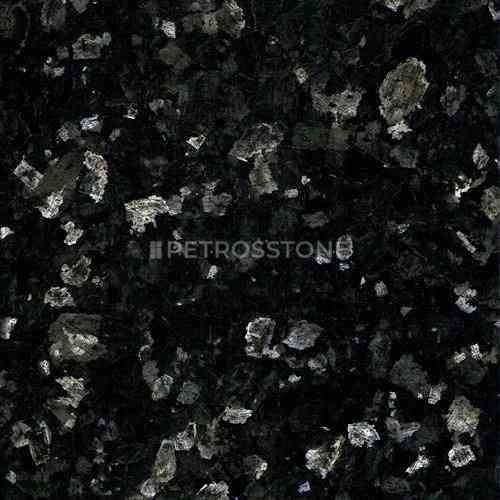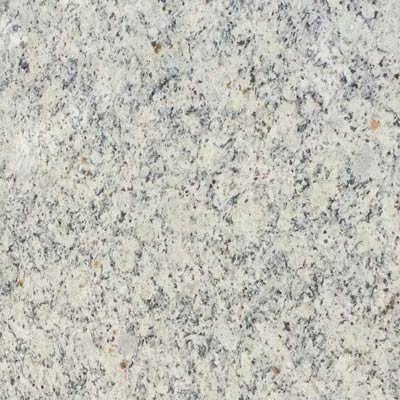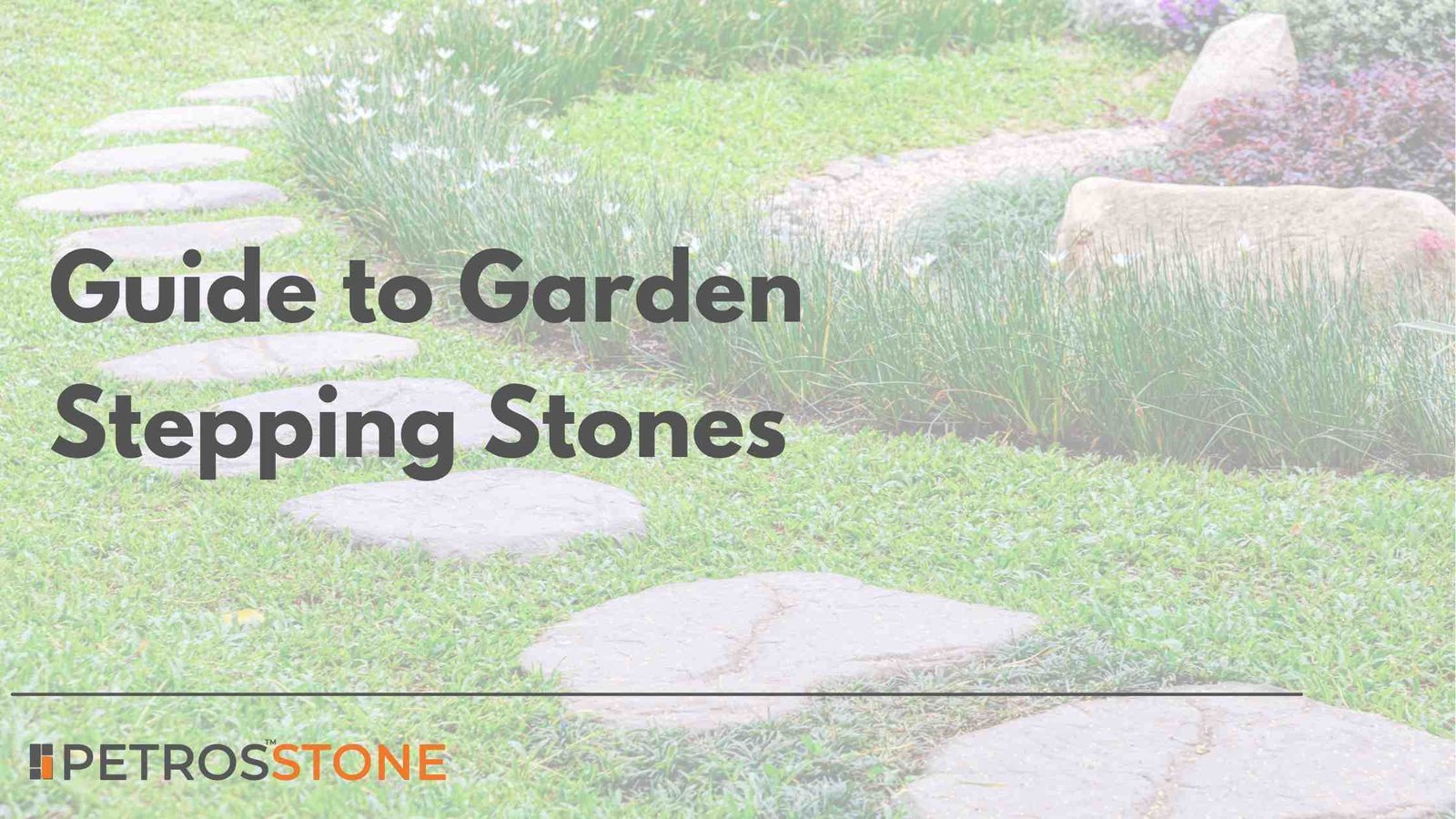
In this article, we will look at the best materials for garden stepping stones – materials that will not only add aesthetic looks but can withstand the weather and look good for a long time. We will also look at stepping stone designs and their prices to help you choose the right stepping stone type, design and mateiral for your garden.
You love enjoying coffee, and taking strolls through your garden. Your flowers are in full bloom. But then you realize that you don’t really have a garden path for those strolls, do you?
We’ve got you covered.
Try outdoor stepping stones for your garden. These are a great way to add personal touches to your outdoor area. They can act as both decorative accents and a path for you to walk through your garden. These stones are made of different materials. They also come in a variety of sizes, shapes, and colors. Come create an interesting garden outdoor setting with us.
What is a Garden Stepping Stone?
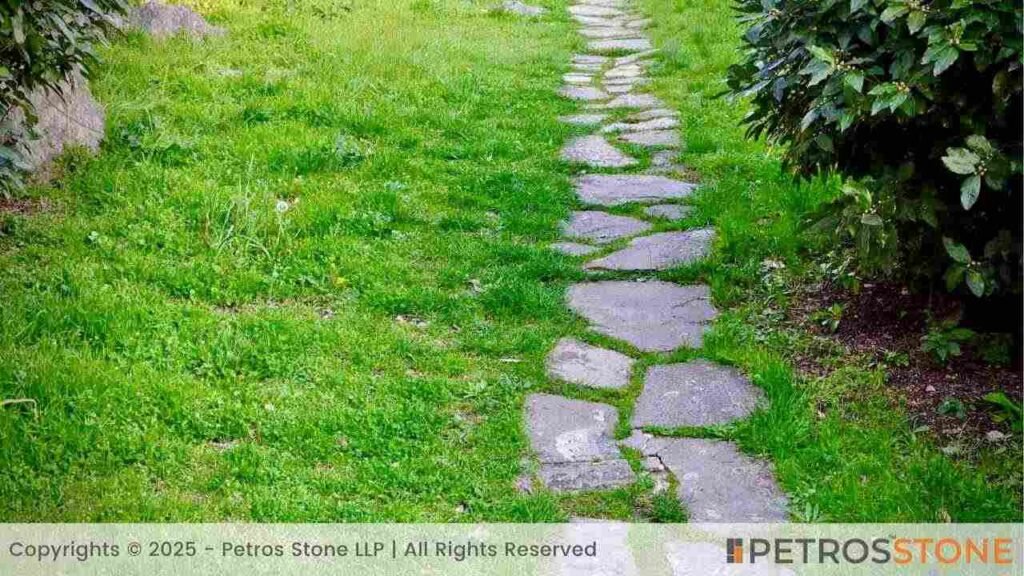
A garden stepping stone is an elevated stone. It is used either alone or in combination with other materials. They provide a path for people to walk on when crossing a garden. They are an excellent way to create pathways in your garden or other areas of your home that aren’t paved. These stones can also be used to make small paved spaces. Stepping stones for gardens can also be used as decorations. They can be incorporated into your landscape as ornamental features.
10 Materials for Stepping Stones
Let’s look into the most trending garden stepping stone materials:
1. Bricks and Pavers
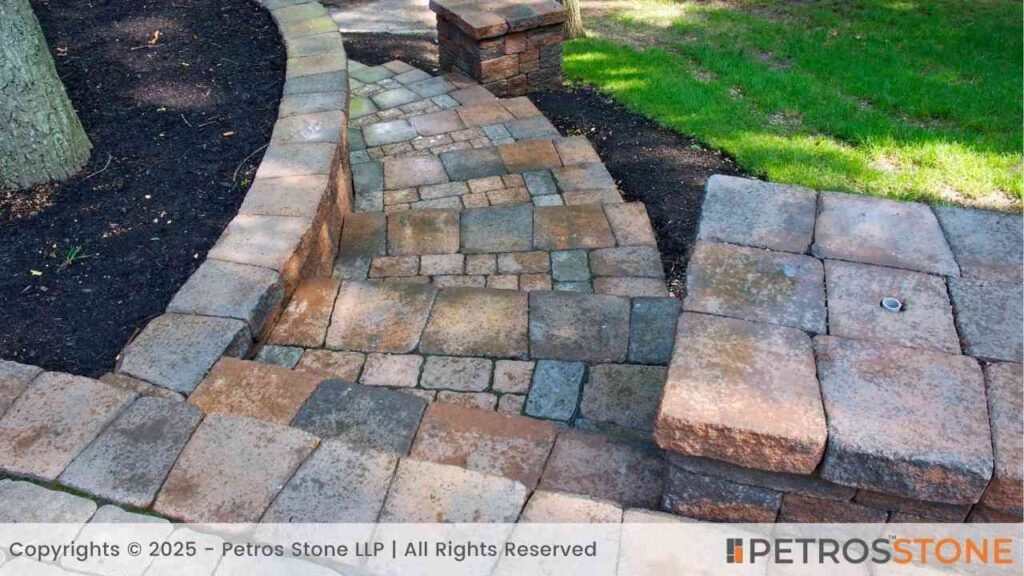
Although they are among the more costly options, brick or paver paths are stunning. You can alter the pattern to suit your style and choose from a wide variety of material options. Even with high traffic, a properly installed pathway will last for 25 to 40 years with little upkeep. When the surface gets dirty, power wash it occasionally, and when necessary, replace the sand in between the pavers. Additionally, replacing a single piece in the event that it breaks or cracks is not too difficult.
2. Marble
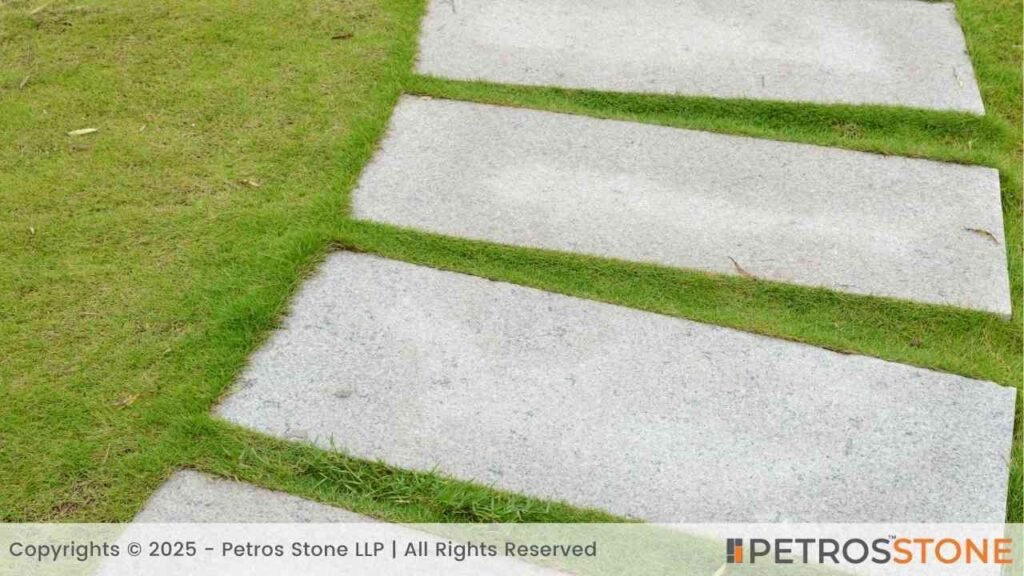
Marble pavers are standard in outdoor spaces like patios, walkways, and roadways because they are made under extreme heat and pressure. They are a popular choice for outdoor spaces because, despite their high cost, their durability and classic elegance enhance the atmosphere of any outdoor setting.
3. Natural Stepping Stones

Combining grass and unpolished stone, a lovely garden path composed of natural stepping stones creates a welcoming appearance. These flat, comparatively thin stones come in a variety of sizes and are frequently called flagstone or fieldstone. At stride length, stones can be positioned farther apart or closer together with tiny joints.
4. Concrete
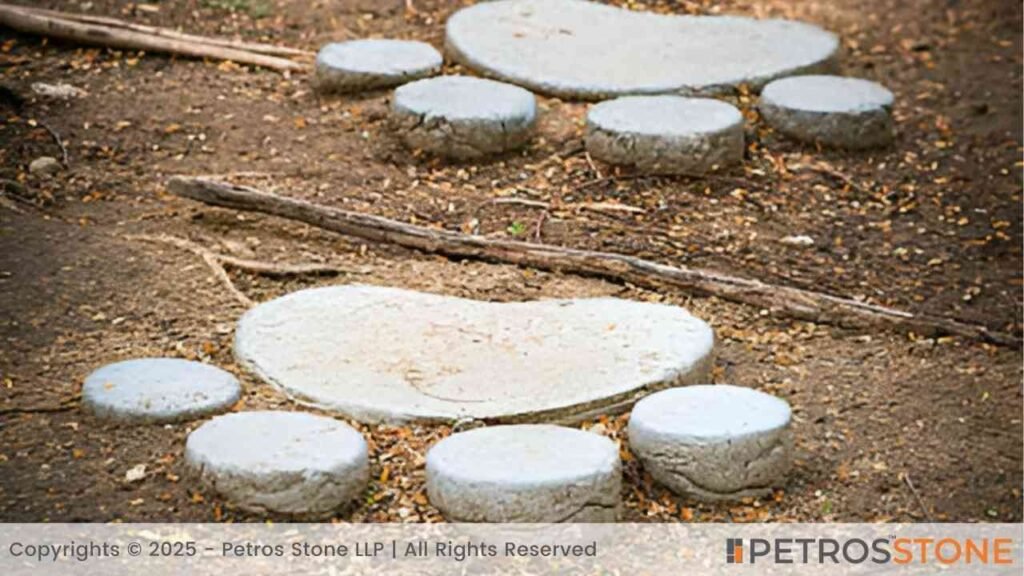
Concrete is amongst the most popular materials for patios in gardens. The most common option is poured concrete. However, many people also choose concrete pavers or slabs. Concrete can be colored or imprinted with patterns and graphics. Thus, it offers a wide range of style options. Additionally, it can be stamped to resemble granite Along with other materials.
Concrete requires periodic maintenance, resurfacing, and resealing. It is recommended that it be resurfaced every ten years and resealed every five.
5. Porcelain
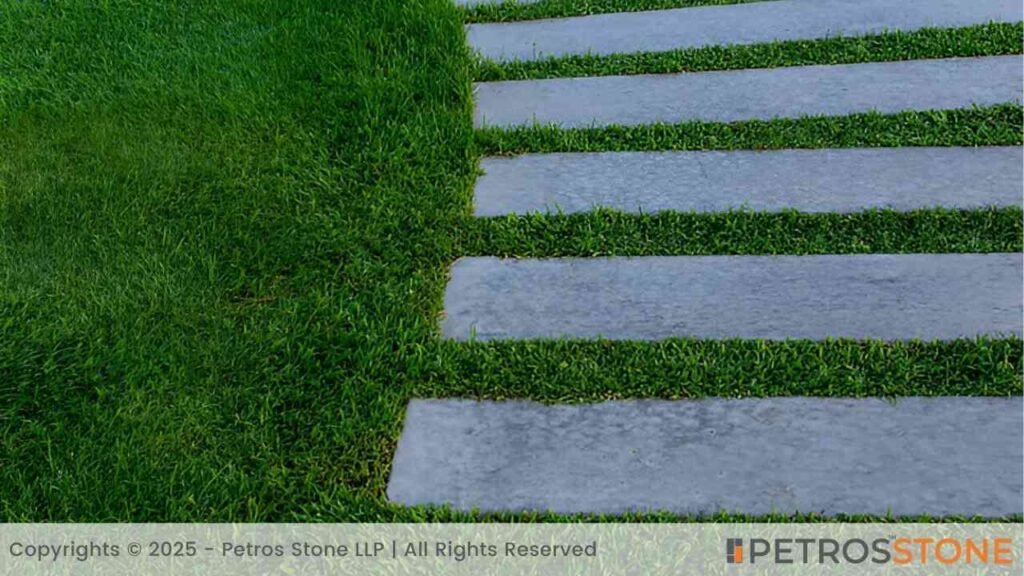
When clay is exposed to high temperatures, it transforms into porcelain. This porcelain is suitable for both indoor and outdoor flooring. This is due to its waterproof qualities. Technological developments have made porcelain pavers nearly identical to stone or wood. Their adaptability also enhances when appropriately installed. The primary benefits of porcelain pavers are their long lifespan and aesthetic appeal. They have the ability to blend in seamlessly with both public and private spaces.
6. Terrazzo
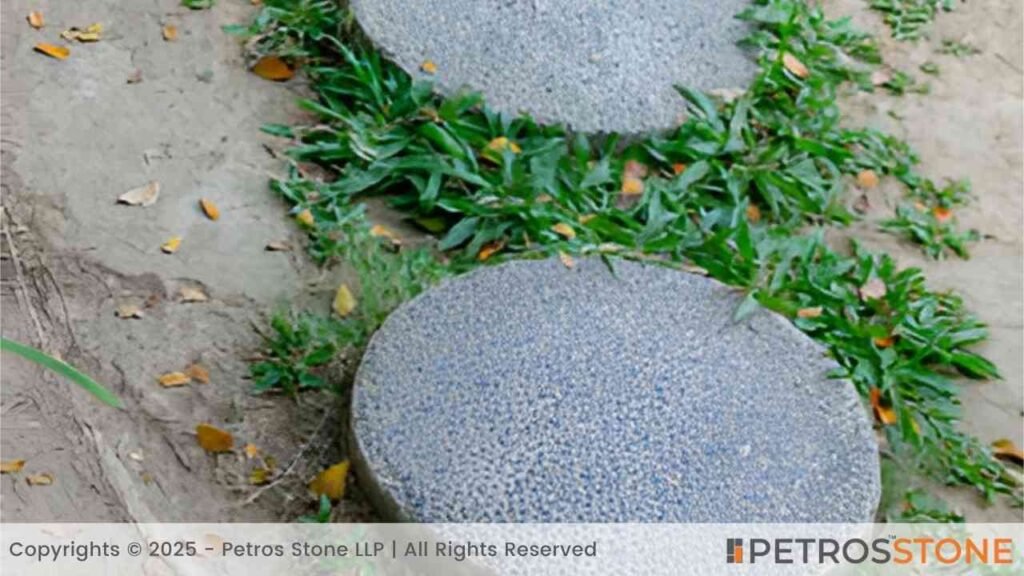
Garden pavements can indeed be made of terrazzo. These are particularly renowned for their beauty and toughness. These are composed of marble, quartz, granite, or glass chips. This makes them resistant to abrasion, discoloration, and water damage. Its easy cleaning and low maintenance requirements make it an environmentally friendly choice.
7. Rubber Tiles
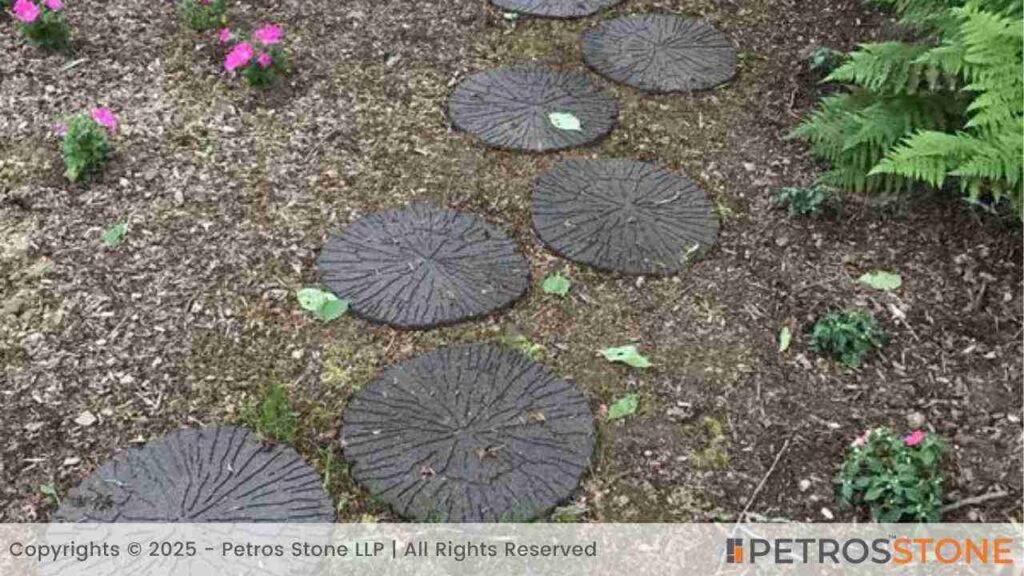
Yes, we know. Rubber garden tiles aren’t usually the first option for a garden. But, they work well for backyard garden designs. This is particularly applicable if you want a surface that is easy on your body and ergonomic. The interlocking edges of garden tiles snap together to form a continuous surface. These are much like the rubber floor tiles used on garage floors. The best part? They may have a surface texture that makes them appear like stone. They are typically 18 to 24-inch squares.
8. Limestone
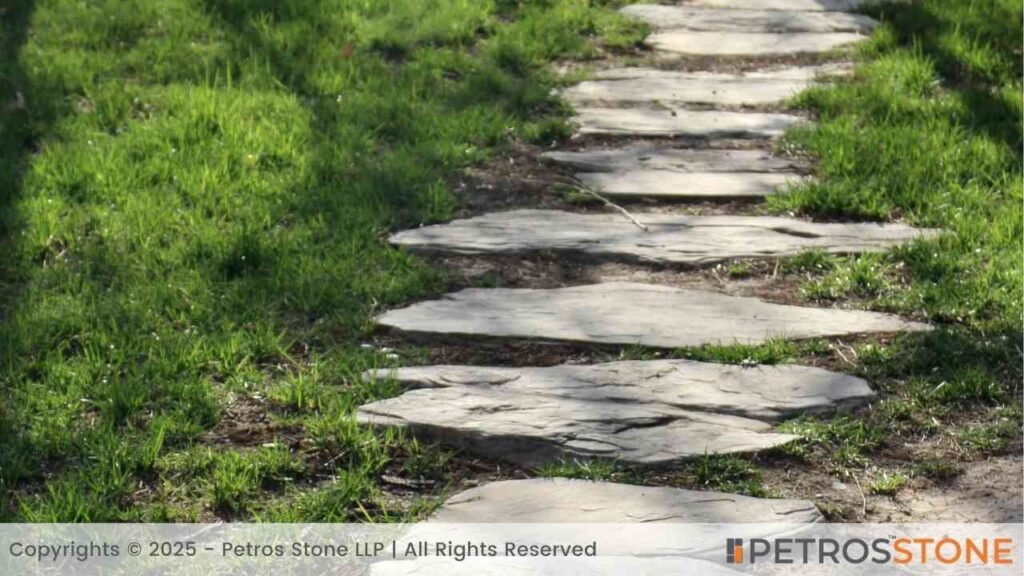
Limestone is another popular material for high-traffic areas like patios, driveways, walkways, and gardens. They come in a variety of colors and finishes. The surface of limestone pavements can be smooth or rustic. These stones can be honed or naturally cleft. It is comfortable to walk barefoot due to its inherent cooling effect. This stone has long-term durability and low maintenance needs, making them perfect for your garden. Limestone is inexpensive, simple to install, and requires little upkeep.
9. Grass
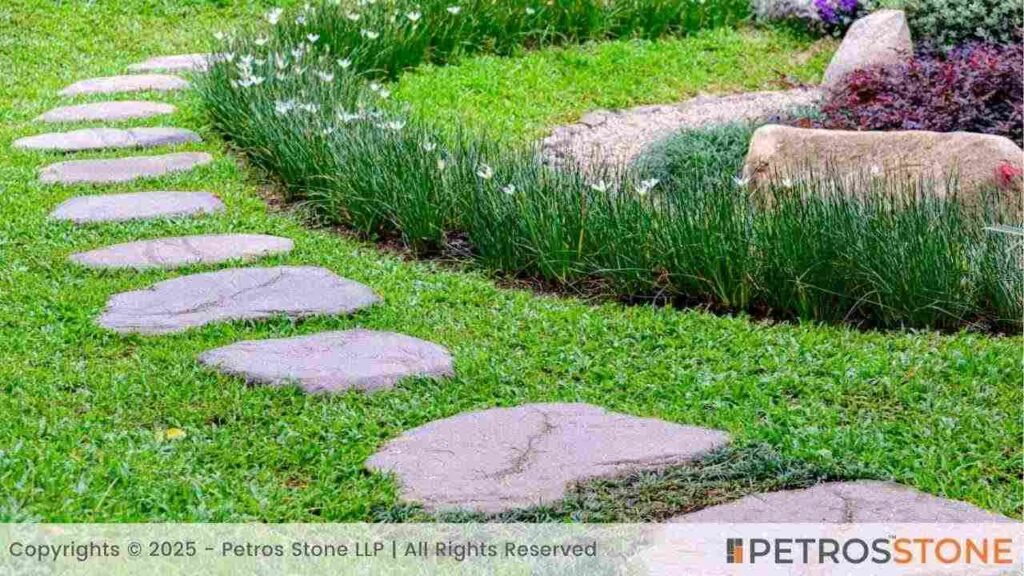
All right, listen to us. We’re not talking about letting the grass or weed grow out of control. Rather, we mean establishing a lovely, well-kept grass pathway. If you have a gravel garden, raised beds, or a lot of hardscaping, a grass pathway is a visually appealing choice. The greenery provides a soft surface for walking on and softens the aesthetic. If you maintain the turf’s health, it will endure forever.
10. Clay
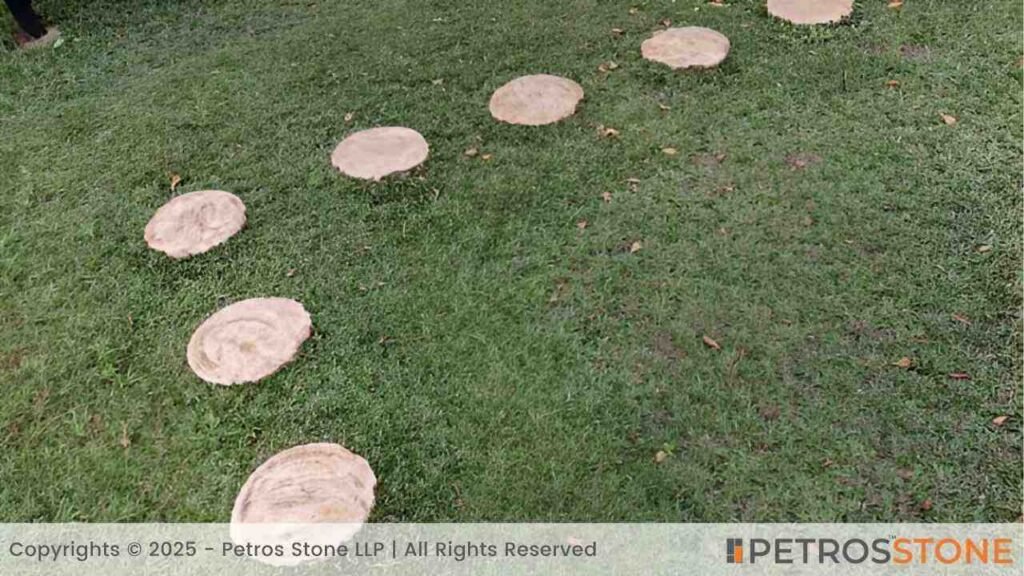
Natural clay is used to make clay pavers. These are then formed into rectangular shapes and fired in a kiln. They are appropriate for high-traffic areas. This is because they can sustain large loads and foot traffic without losing structural integrity. These clay pavers are available in a wide range of sizes, shapes, and colors. They can provide you endless design options for your garden. They can be recycled at the end of their useful life. Above all, they are low maintenance, simple to install, and environmentally friendly.
Outdoor Garden Stepping Stones Price
| Stepping Stone Material | Price Range (USD per Square Foot) |
| Bricks and Pavers | $8 – $20 |
| Marble | $20 – $40 |
| Natural Stepping Stones | $15 – $35 |
| Concrete | $6 – $15 |
| Porcelain | $10 – $25 |
| Terrazzo | $15 – $30 |
| Rubber Tiles | $5 – $12 |
| Limestone | $16 – $32 |
| Grass | $3 – $8 (artificial grass) |
| Clay | $10 – $20 |
10 Designs of Stepping Stones
A great way to give your outdoor area personality is to create a stepping-stone pathway through your garden beds.
1. Establishing Contrast
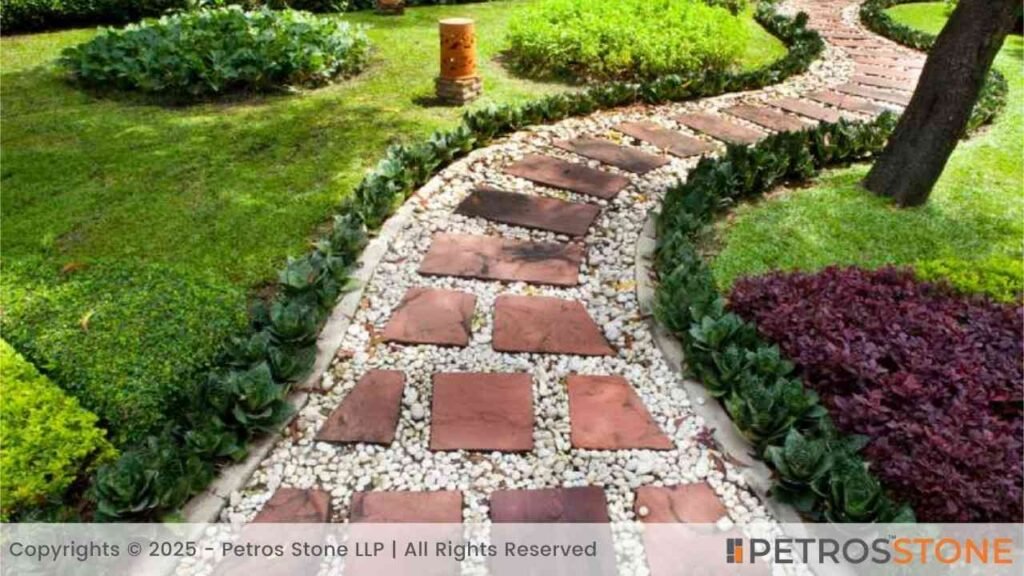
When it comes to walkway stepping-stone ideas, contrast can produce an eye-catching effect. To create a striking and eye-catching garden pathway, think about placing darker paving stones in lighter-colored pebbles or vice versa. Another way to give the walkway depth and interest is to put light rocks in a dark mulch. Each element’s beauty is accentuated by the ideal pathway created by the contrasting colors. To create walkways that make an impression, use your imagination when making decisions.
2. Integrated Stone Pathway
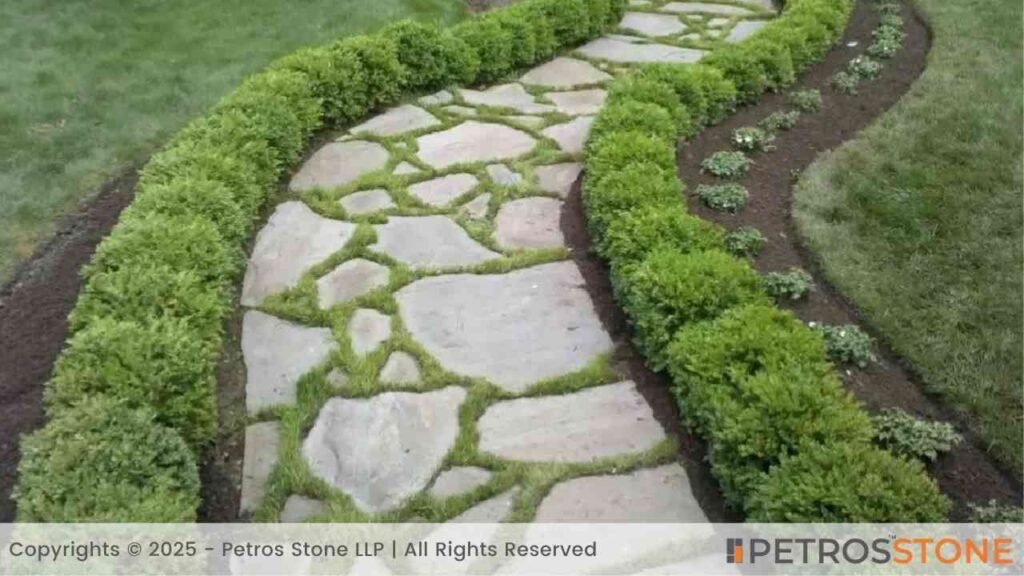
Your garden will appear lovely and organic if you let greenery grow in between the stepping stones. This pathway promotes the growth of grass, plants, and moss in place of pebbles or mulch to fill in the spaces. You can place large rectangular stones in the soil while leaving room for plants.This creates a harmonious combination of stone and living elements,
3. Be Consistent
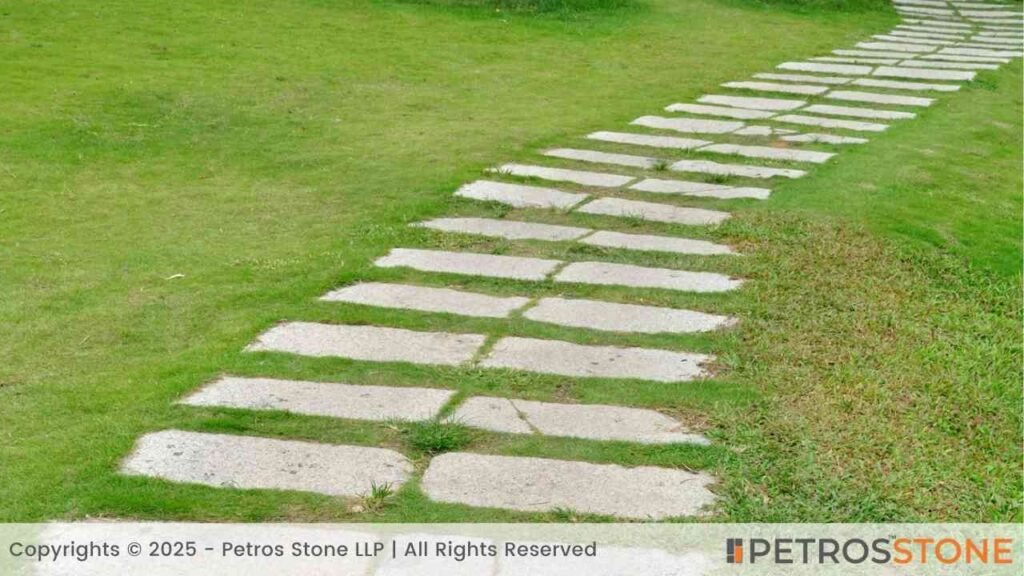
Make sure you keep your garden somewhat consistent for a modern, tidy appearance. Maintaining the same color scheme will guarantee that your finished product will look and feel cohesive. So, use the same textures for your curbs and edging as you do for your stepping stones. Contrasting hues or textures may indicate that your garden design is inconsistent. It may seem like jumble of parts than a single, coherent idea.
4. Stones in Various Shapes
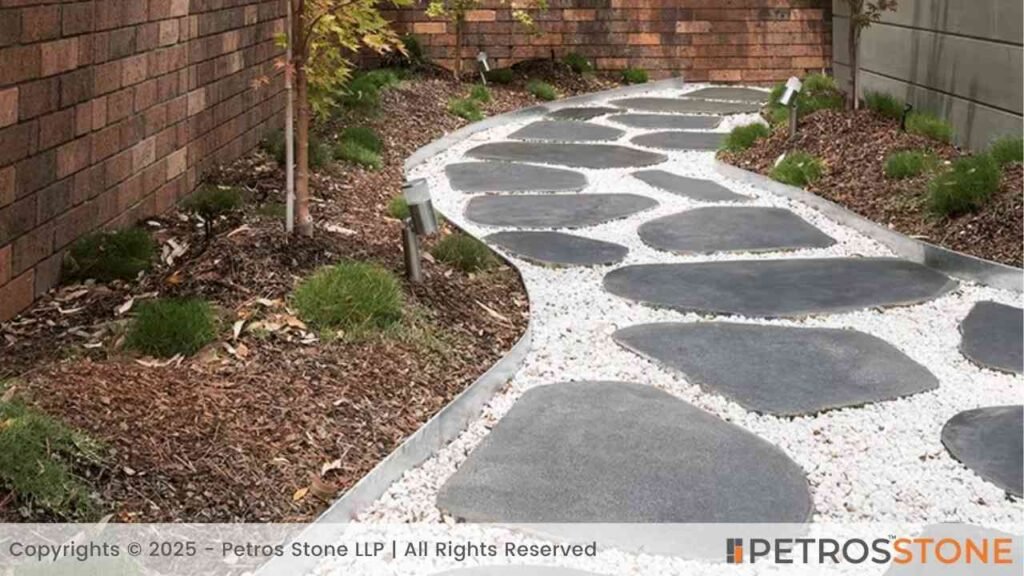
Why not create visual interest with a variety of shapes? Using stones of various shapes and textures can help the yard come to life. You can use flat stones of different sizes. This shall make a pathway that is both natural and aesthetically pleasing. To further improve the landscaping, think about surrounding the stones with larger gray and white boulders. This will produce a dramatic contrast.
5. Use Personalized Paving Stones to Add Color
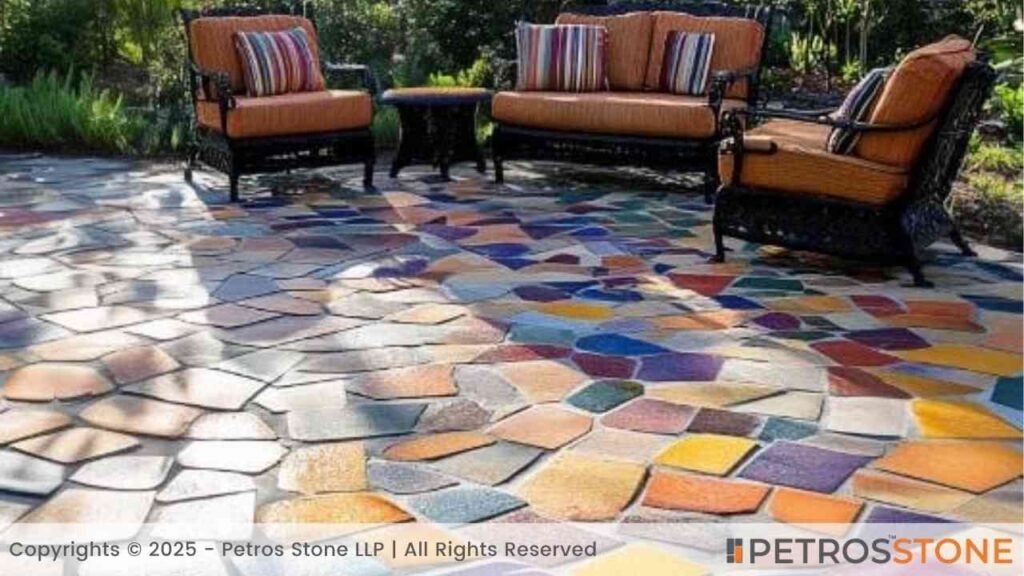
Custom garden paving stones are an excellent way to add color to your garden path. They will give the walkway a unique flair, whether you choose to make your granite, mosaic, ceramic, or concrete stepping stones or buy some unusual pavers from a nearby manufacturer.
6. Patio
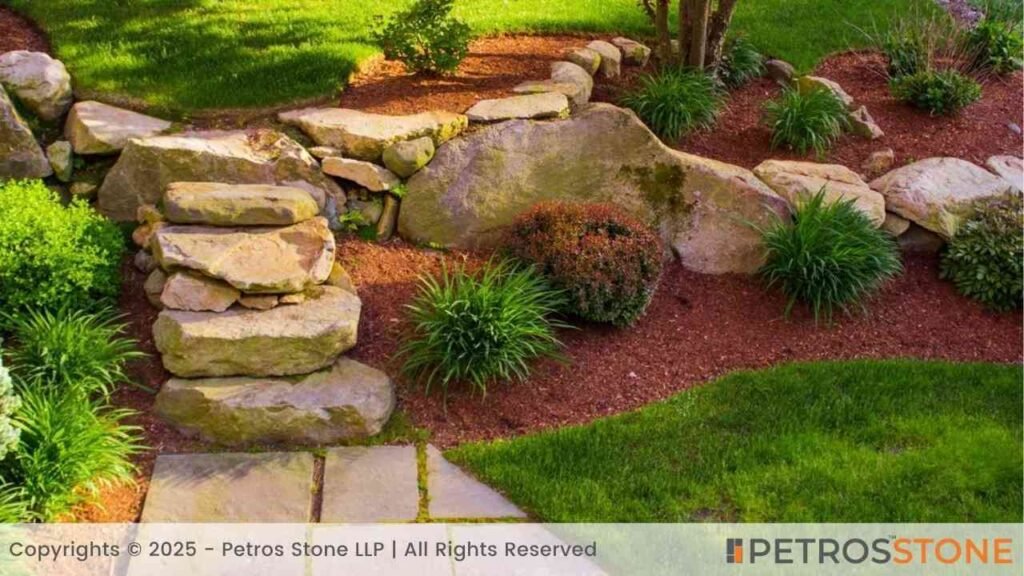
Stepping stones made of natural stone can be used to create a beautiful patio. These stones can be used as a practical walkway. They also look great as a decorative accent. Use them to draw attention to features. You may also delineate seating areas, or design a welcoming walkway in your garden. Stone’s inherent beauty and adaptability give your patio a dash of sophistication and charm.
7. Circles
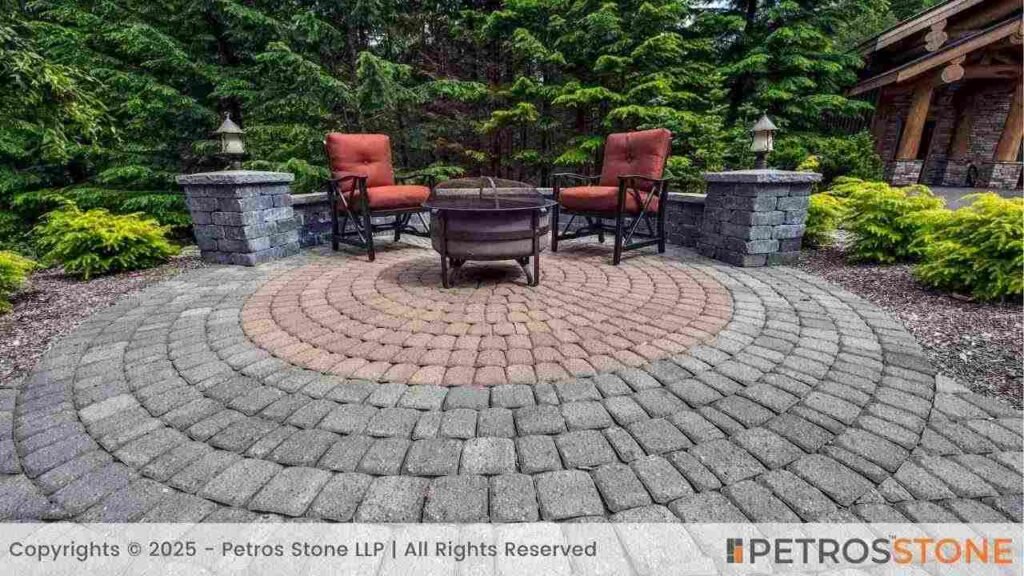
Arrange your stepping stones in circles to give your garden more visual appeal. Place a fountain in the middle of the stepping stone circle as a focal point. Paving around a fire pit is another excellent alternative to use circular stepping stones. In this case, larger stepping stones work best.
8. Checkerboard
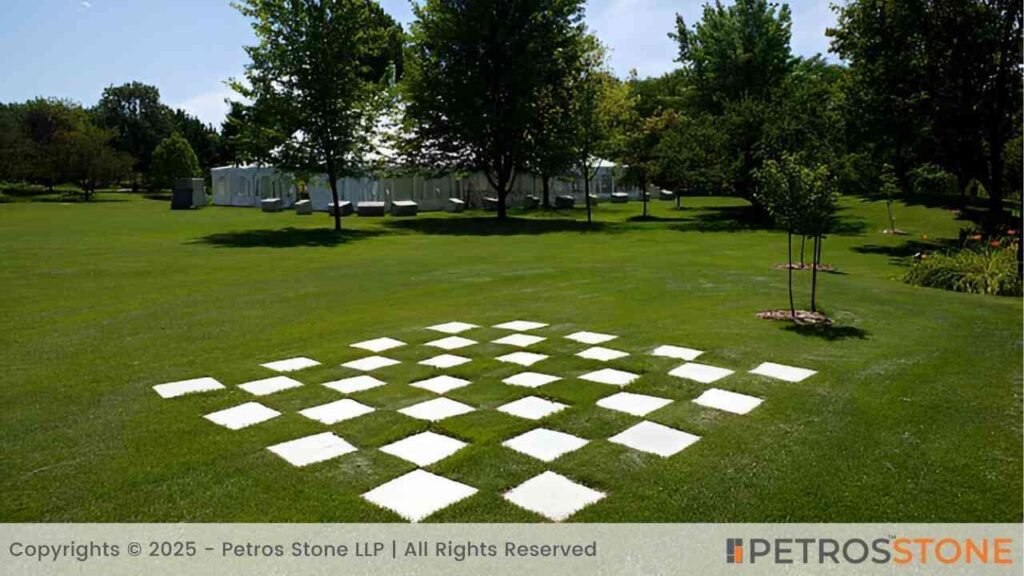
Adding a checkerboard-patterned area to your backyard is simple. Yet it is an incredibly effective way to give it a playful twist. Maximize every square inch of your outdoor space. Add a creative herb garden or plant vibrant flowers and ground cover in the empty areas.
9. Constructing on a Slope
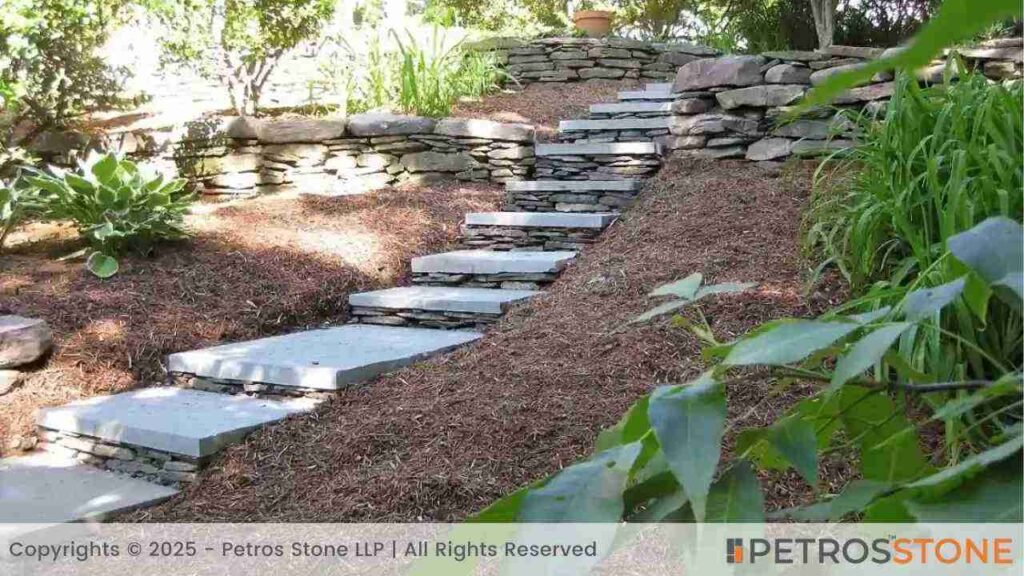
Adding stairs is functional and aesthetically pleasing. This can help you landscape a sloping backyard with stepping stones. Build a flat, easily navigable staircase out of large, naturally shaped stone slabs. Give your area more curb appeal and usefulness, carefully arrange the stones in various sizes and shapes.
10. Bricks
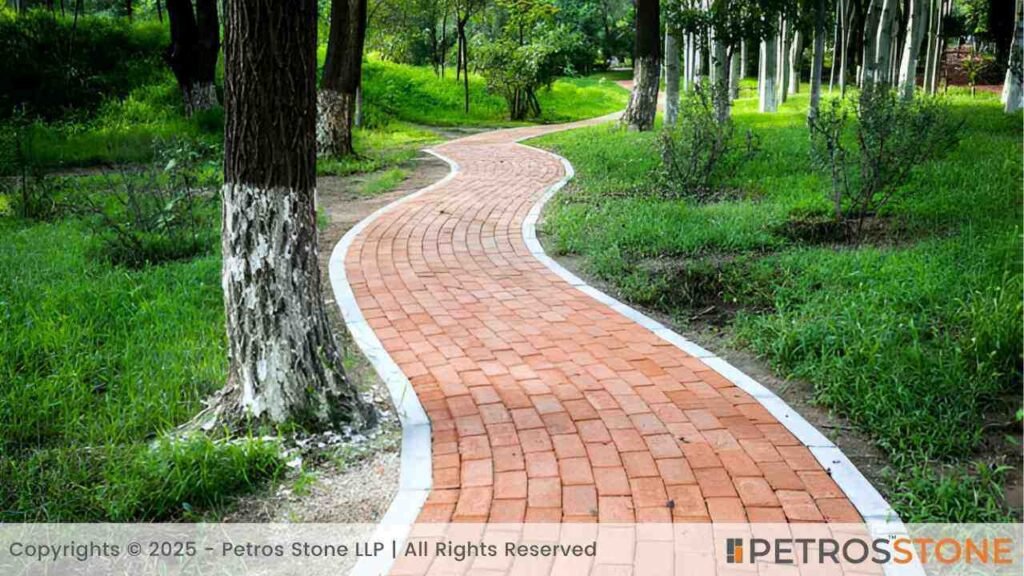
The variety of patterns you can create with bricks will astound you. Enhance your brick pathway by laying the paving in a sophisticated herringbone design. Or you may arrange the bricks in circles to produce swirls. Bricks are a fantastic way to frame larger paving stones with a more detailed design, giving your pathway an elaborate edging feature.
What Should I Look for in a Garden Stepping Stone?
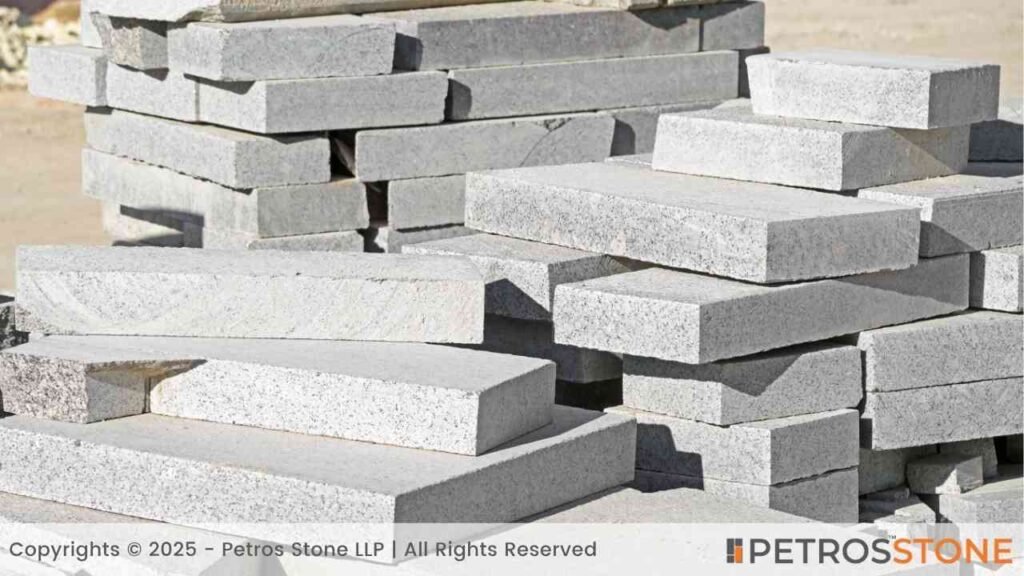
Now that you have enough idea about the design and material of your stepping stone, let’s look into some other important considerations!
Landscape Design and Aesthetic Appeal
The stepping stones’ shape should blend in with the area’s overall landscape design and aesthetic appeal. Take into account already-existing features. This includes trees, vegetation, and architectural details. Stones with unusual shapes can blend in perfectly with the environment. This creates an organic and natural look. On the other hand, geometric shapes like circles or hexagons can add a new dimension to contemporary landscapes.
Pathway Length and Width
The walkway’s length and width will determine the stepping stones’ shape. Longer paths may benefit from rectangular or elongated designs. This may provide a sense of continuity. Conversely, in areas with limited space or shorter passageways, smaller shapes like squares or circles can be used to maximize the available space.
Safety and accessibility
Safety is an important consideration when choosing stepping stone shapes.This is particularly applicable in public or commercial areas. Select forms that minimize the possibility of slipping or tripping and offer stable footing. Steer clear of sharp or angular stones. If the walkway needs to be wheelchair accessible for ease of use, make sure the stepping stones have a level surface.
Maintenance and Durability
Depending on the shape, stepping stones may require different levels of maintenance and durability. Generally speaking, flat, smooth surfaces are easier to maintain and clean. The construction of the stepping stones should also be taken into account. While concrete stones are more adaptable and require less maintenance, natural stones like slate or flagstone can be a classic and durable substitute. Tips and tricks will be discussed in a separate section.
Flexibility and Installation
It’s also critical to take into account how easy and versatile the stepping stone shapes are to install. Some shapes can be assembled more quickly and easily, while others may require more involved installation processes. Verify that the selected forms can be put together according to the necessary arrangement or pattern of stepping stones.
Budgetary considerations
Finally, but just as significantly, every decision is heavily influenced by financial constraints. There is a wide range of sizes, materials, and costs for stepping stones. Determine your budget early on and look into options that will meet it without compromising quality or usefulness.
Tips to Properly Maintain Landscape Stepping Stones
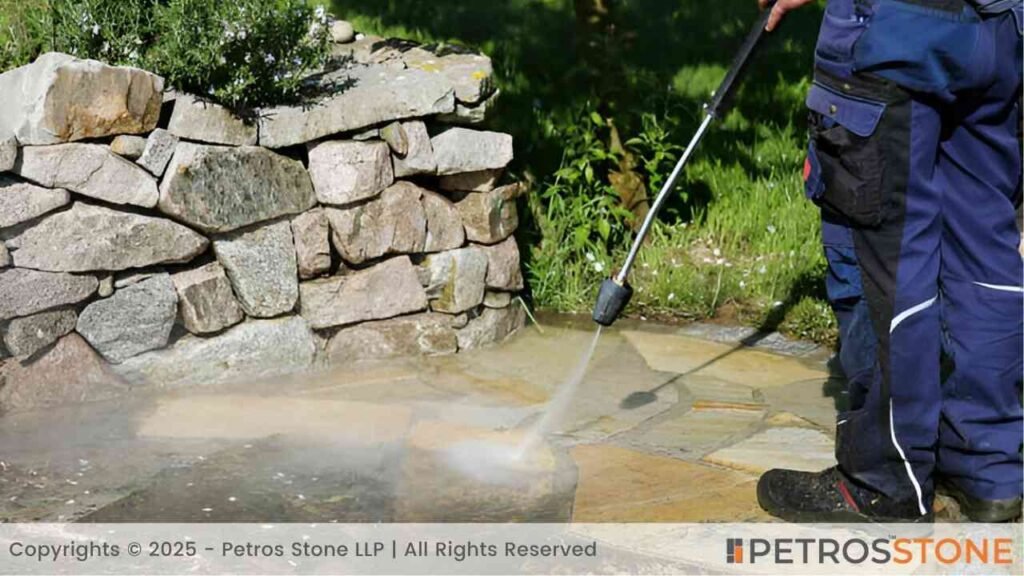
It is essential to maintain your outdoor stepping stones at all costs! Let’s see how
Clean Concrete Pavers of Grease and Oil
You’re unsure of what to do when oil or grease stains start to show up on your pavers or stone steps. We know the answer! Generally speaking, applying liquid dish soap will remove light oil and grease stains. Scrub your stone walkway with a nylon brush after using the soap directly and letting it sit for 20 to 30 minutes. Then, rinse with hot water.
Remove Rust Stains from Pavers and Stepping Stones
Have you noticed rust forming on your garden path? Many of us have experienced this! Iron from some fertilizers can discolor the surface of your landscape stone steps. To avoid rust spots, make sure to sweep the pavement’s surface after applying lawn or plant fertilizer.
Cleaning Pavers of Food and Drink Stains
Who hasn’t spilled a little wine at a dinner party? Don’t freak out if one of your guests has a minor mishap with food or wine!
In this case, immediately rinsing the patio paver with warm water is the first step in proper maintenance. The majority of food and drink stains on pavers that resemble natural stone can be removed with liquid dish soap or laundry detergent. Using a cloth or soft-bristled brush dipped in the soap or detergent solution, gently remove the stain by combining it with warm water.
Keep Your Stone Walkway Clean All Year Long
Your stone walkway requires very little general upkeep, but it makes a big difference. Certain environmental conditions may require more care and upkeep, but if you are consistent with the minor adjustments, you can avoid future more involved garden path maintenance. Keep in mind that concrete has pores. To prevent organic stains, sweep the leaves off your stone steps as soon as they start to fall. Please spend a few minutes hosing them off when you notice dirt on them to keep them clean.
Need More Help?
Stepping stones are a flexible and affordable way to design the garden walkway of your dreams because they come in a wide variety of textures, shapes, and sizes. Any garden enthusiast can complete this project, regardless of their preference for a sleek, modern design or a rustic, natural path. By selecting your materials and creating a layout that suits your needs and style, you can start the process of remodeling your outdoor area.
Feel free to get in touch for a free consultation, quote, and get a detailed understanding from our experts here at Petros®. Visit https://petrosstone.com/ or call +91-8446360361 and WhatsApp

Hi, I’m Shivangi,
With years of experience in the architecture and design space, I write to bridge the gap between material knowledge and practical application. At Petros® Stone, I create content that highlights the beauty, function, and impact of natural stones, helping homeowners and professionals make confident design decisions.
Explore my LinkedIn profile to learn more about my work!
Brown Granite
White Galaxy Granite
Blue Bahia Granite
Silver Cloud Granite
Black Pearl Granite
Dallas White Granite


